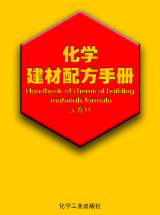
主要责任者: 沈春林;詹福民,庞正其,徐建月
责任方式: 主编;副主编
出版者: 化学工业出版社
出版地: 北京
字数: 1020 千字
页码: 1-832
开本: 32
中图分类号: (1)TU53;(2)TQ
装帧: 简
语种:中
定价:60.00
出版时间:1999-03
丛书多卷书否:否
书目简介:本册工具书共收录26条词条。
被引频次:17
| 词条 | 化学建材配方手册 |
| 类别 | 中文百科知识 |
| 释义 |  主要责任者: 沈春林;詹福民,庞正其,徐建月 责任方式: 主编;副主编 出版者: 化学工业出版社 出版地: 北京 字数: 1020 千字 页码: 1-832 开本: 32 中图分类号: (1)TU53;(2)TQ 装帧: 简 语种:中 定价:60.00 出版时间:1999-03 丛书多卷书否:否 书目简介:本册工具书共收录26条词条。 被引频次:17 |
| 随便看 |
开放百科全书收录579518条英语、德语、日语等多语种百科知识,基本涵盖了大多数领域的百科知识,是一部内容自由、开放的电子版国际百科全书。